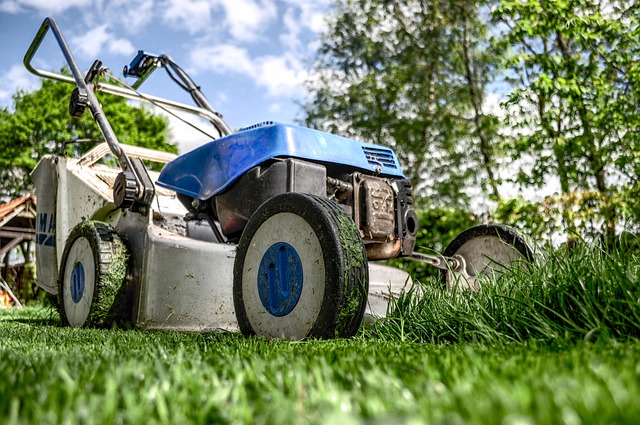Goats are overall very hardy animals. The breeding is so pure in even the most heavily bred purebreds that they are as close to their natural state as any domestic animal, and that makes them less susceptible to disease. However, there are a few common problems that can crop up from time to time, and knowing what they are, how to recognize them, and what to do about them will make your work much easier.
 One of the most common problems with goats is acidosis. This occurs when they are able to get into large quantities of feed. Acidosis only occurs with grain feed, not hay or grass feeding, so always keep your grain securely locked up and feed bins secured shut. Signs of acidosis are a hanging head, depressed attitude, muscle twitches, and possibly grinding of teeth. Another symptom of acidosis is bloat. You will feel a swollen abdomen on the left side just in front of the flank area.
One of the most common problems with goats is acidosis. This occurs when they are able to get into large quantities of feed. Acidosis only occurs with grain feed, not hay or grass feeding, so always keep your grain securely locked up and feed bins secured shut. Signs of acidosis are a hanging head, depressed attitude, muscle twitches, and possibly grinding of teeth. Another symptom of acidosis is bloat. You will feel a swollen abdomen on the left side just in front of the flank area.
In order to treat acidosis, restrict all access to grain immediately. Use a drench gun to introduce bicarbonate of soda (otherwise commonly known as baking soda) mixed with water. Dilute two to three ounces of baking soda in a quart of warm water and use your drench gun to make them drink it.
Call your veterinarian if relief is not noticed immediately. More urgent measures include piercing the abdomen where the bloating is, and releasing the built up gases.
Extra note: You can buy stock-grade baking soda in large quantities from many stock feed stores. These big bags cost a lot less than buying food grade from a supermarket, and it’s a good idea to keep some available at all times for your goats. You can put it in a mineral feeder and let them have free-choice access to it.
Another common problem is bottle jaw. It is called bottle jaw because of the appearance of the head. It looks like a bottle, appearing wide under the jaw then tapering to a tiny opening (the nose). This disease is actually a symptom of a serious worm infestation. It is more prevalent in the evening when the animal has been grazing with their heads down all day. The swelling can go down some overnight and appear to be getting better in the morning, when in reality it is just because the goat has been sleeping with her head up and the fluids have drained away from the face. By nightfall she will be swollen again.
Strong worming is required to get rid of the problem. If you have been worming, the medications may not be effective for worms in your area, or if you have not wormed in a long time, they have accumulated to a severe level. Consult your veterinarian if the gums are pale, as that is a sign of anemia caused by the loss of blood due to worms in the system, and your goat may have require extra care and iron supplements to help her build her strength.
Mastitis is a common infection in breeding does. It is caused by an infection in the mammary glands, and the udder will appear hot, hard, and painful. Milk may appear chunky or clotted, but it can sometimes seem normal as well.
Left untreated, the affected teat will become clogged and unable to express milk. It can spread to the opposite side as well. Prevention is the best treatment, and always cleaning the teats before and after each milking as well as being gentle while actually milking is the best way to keep your does healthy.
If you do have to treat mastitis, there are infusions with antibiotics that you can use. You insert them into the infected teat to clear up the problem. Call your veterinarian and discuss the best treatment for your doe.
Coccidiosis is most often seen in very young or very stressed goats. It is caused by a parasite bloom in the intestines, and signs include not eating, diarrhea, blood in the stools, sudden and rapid loss of weight, and fever. Consult your veterinarian on the best treatment for your infected animals. This is a fast-acting and serious problem that will kill quickly if not treated. Goats that receive immediate care often recover as quickly as they fell ill.
Some method of stopping the diarrhea during treatment to avoid too much electrolytes lost is important. Scour-Halt is a good product, or your veterinarian may have a product to reduce diarrhea and replace lost fluids. Adding some Gatorade to the water can entice the sick goat to drink more and help replace electrolytes.
Another virus often found in goats is soremouth. It is very contagious and can infect your entire herd. It shows up as ulcers on the lips or nose. If the infection is present in young kids, it can pass to the udder and cause mastitis in the dam. Preventative vaccines are the best method of dealing with soremouth, but if you end up with it in your herd, isolate the infected animal(s) and consult your veterinarian immediately.
CAE and CL are two other serious diseases that can spread through your herd. With CAE (caprine arthritis encephalitis), very large swelling at the knees, hardened udders, and a general wasting are often the first signs, usually followed by coughing and pneumonia. CAE can be passed to newborns through the milk. Do not let a kid born to a dam with CAE nurse from their mother. Remove immediately at birth and bottle feed to stop the cycle from passing on. Do not use the milk of a goat with CAE to feed kids or drink yourself.
It is possible to test for CAE before purchasing new stock. However, the disease may actually be present and not producing enough antibodies to register on the test. Always isolate new animals before bringing them into the herd, using the milk, or letting kids nurse.
On the other hand, any time you see a lump of unknown origin that is soft and squishy, you should suspect CL (Caseous Lymphadenitis). CL is an abscess in the glands and can appear in any area of the body, but is most often seen under the jaw, on the neck, and behind the elbows.
Isolate any animal with signs of either illness. Consult your veterinarian immediately. NEVER attempt to drain a CL (or any lump you suspect may be CL) on your own, or wait until it opens and drains on its own. You can actually make it look like the problem is gone by draining the lump, but in reality you are opening it up to spread faster in the system. You are exposing any animal in the vicinity to the disease as well as infecting your farm, because CL can live in the soil for over a decade and is impossible to get rid of. Your veterinarian can test the fluid in the lump to see if it is CL, and then assist you in deciding between treatment or disposal of the animals to avoid losing the entire herd.
The most common causes for CL are bringing new animals to the farm and visiting an infected farm and bringing it to your own on your clothing. If you have been to a farm where you suspect CL, change your clothing and shower, then wear different shoes before going out to your own barn or goat shed.
ALWAYS isolate new animals in a completely separate area for at least one month before introducing them to your herd. This is the best way to prevent most contagious diseases from affecting your entire herd.
©2011 Off the Grid News










